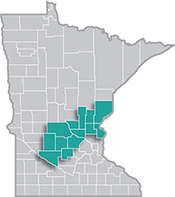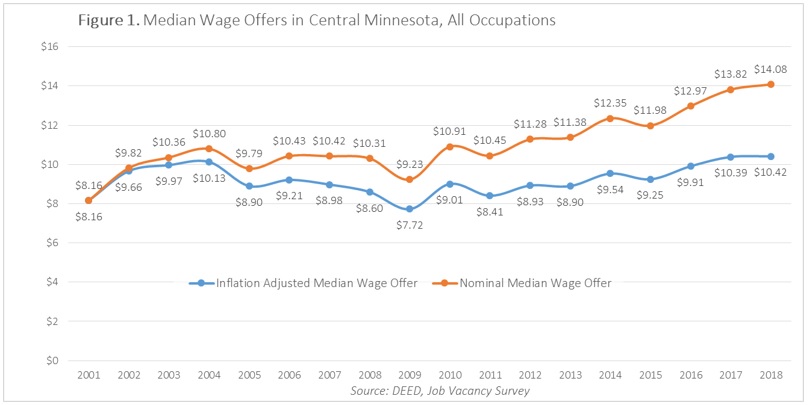 Central Minnesota is a manufacturing stronghold, with several global manufacturing firms operating there.
Central Minnesota is a manufacturing stronghold, with several global manufacturing firms operating there.
The region is especially well known for its expertise in food processing, printing, furniture manufacturing, appliances, machinery and heavy equipment manufacturing.
View our latest blogs on CareerForce. Want the freshest data delivered by email? Subscribe to our regional newsletters.
6/11/2019 11:00:00 AM
Luke Greiner
Central Minnesota employers have been posting record numbers of job openings the past few years, and the labor market has never looked better for job seekers. But the ability to get a job isn’t always the benchmark used by actual humans as it is in economic models. Instead many workers carefully assess factors like schedule, location, benefits, and work environment or management, among others. Yet the most important factor for typical job seekers (both employed and unemployed) is wages.
The current tight labor market has finally pushed median wage offers (the wage advertised for job openings) for all occupations higher in recent years, succumbing to the overwhelming demand for scarce labor. The most recent Job Vacancy Survey data indicate that through 2018, wage offers hovered around $14 per hour. That is not bad considering how low wage offers were during the recession – $9.23 per hour in 2009.
Recalling what things used to cost, or what jobs used to pay, does little to help understand price changes. To have a better grasp on what things used to cost or in this case, wage growth, the dollars need to be adjusted for inflation. Adjusting for inflation accounts for the deflationary effect that rising prices have on current dollars. For wage offers to actually rise, they need to increase faster than inflation. The Federal Reserve publicly targets 2 percent inflation per year, but monetary policy and controlling the supply of money can only do so much, leaving the actual rate of inflation a bit of a moving target.

After accounting for inflation, it’s easy to see that much of the gain in wages has been eroded by inflation, though wage offers are slowly increasing. Slowly is the key word, since real median wage offers have risen just 29 cents since the pre-recession peak in 2004. The last recession was a serious setback for real median wage offer growth. The good news is the gap between real and nominal median wage offer growth is narrowing, or at least the trends suggest that real median wage offers could be catching up to nominal growth. Simply put, job seekers are benefiting from more buying power recently, but it would take faster wage growth to lure would-be workers off the sidelines and into the labor force.
Contact Luke Greiner at 320-308-5378.